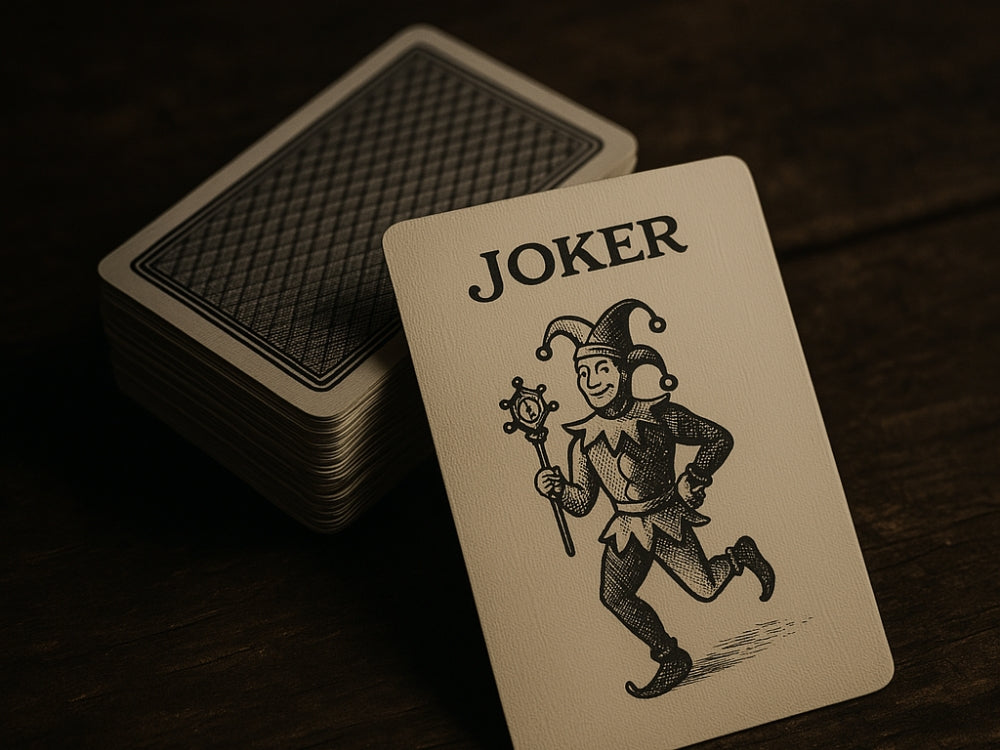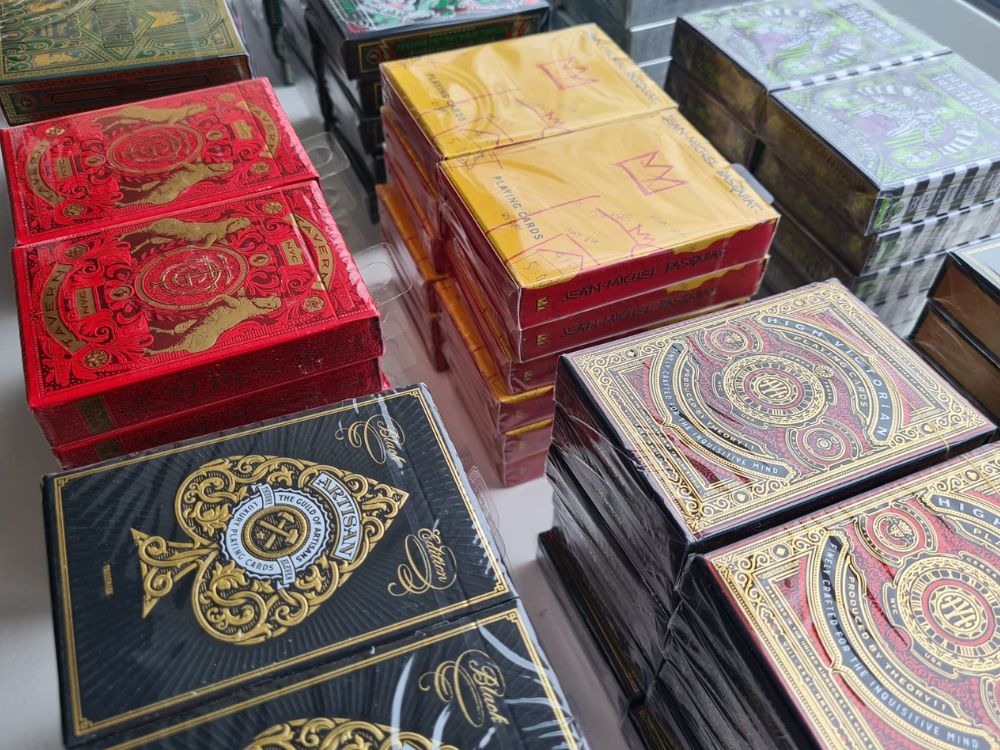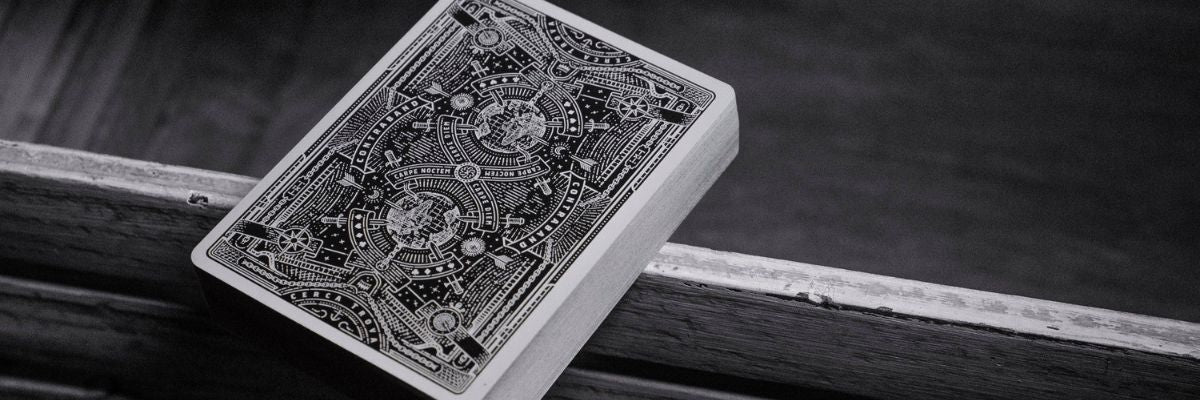Ever picked up a deck of cards and found yourself wondering how we ended up with these familiar little rectangles – queens, aces, jokers and all? Most of us just shuffle, deal, and get on with the game. But the history of playing cards is anything but ordinary. From empresses in ancient China to royal taxes and pub games, it’s a story full of invention, migration, and surprising turns.
And if you’ve ever asked who invented playing cards, when were playing cards invented, or where were playing cards invented, you're not alone. The truth is, we’re still piecing it together – but what we do know makes for a cracking tale.
Because the history of playing cards doesn’t start in a casino or at a royal court, it begins over a thousand years ago, in imperial China.
From Paper Money to Playing Decks
Let’s rewind to the 9th century. Tang Dynasty China was having a bit of a cultural boom: printing was on the rise, and someone (no one knows exactly who) came up with the idea of turning strips of paper into something you could shuffle, deal, and play with. These early “cards” were long, narrow, and more like bookmarks than anything you’d use in a game of rummy. Some historians reckon they were even inspired by actual paper currency – money turned into game pieces.
From there, playing cards drifted westward. Through trade routes and cultural exchange, they found their way into the Islamic world. In 13th-century Egypt, the Mamluks crafted beautiful 52-card decks with four suits: cups, swords, coins, and polo sticks. No people on the cards, though – religious restrictions meant ornate calligraphy and decoration took centre stage. But structurally? These decks are basically the great-great-grandparents of the ones we use today. That moment right there is when the evolution of playing cards really kicked into gear.
Europe Gets Dealt In
By the mid-1300s, cards hit Europe. And spread like wildfire. Italy, Spain, Germany… every region added its own flavour. The earliest mention of European card games comes from 1377, when a Swiss monk got very enthusiastic (or possibly very annoyed) about their popularity. Early European suits mirrored the Mamluk ones: swords, cups, coins, clubs – but they didn’t stay that way for long.
The French, in the late 15th century, took a clever shortcut. They simplified the suits into red and black icons: hearts, diamonds, spades, and clubs. This made them way easier to print using stencils. And just like that, the version we know today (the “standard” 52-card deck) started to take hold. That’s the reason those French suits ended up on everything from poker tables to Harry Potter playing cards.
If you're after a straightforward timeline of how it all unfolded, we've got a full article on the Timeline of Playing Cards that lays it out step by step.
A Very British Shuffle
Britain arrived a little late to the card party but made up for it with gusto. By the 15th century, French-made decks were being smuggled into England so successfully that Parliament eventually banned them to support local card-makers. Fast forward a few decades, and Britain was making its own mark…literally. From 1711 onwards, every deck sold in England had to include a taxed and officially stamped Ace of Spades. One poor guy was hanged for forging it.
British decks went on to shape what we now call the “international pattern” – the court card style used in everything from bridge to blackjack. And yes, we’ve got a separate article that dives into all the gloriously odd design choices on court cards, like why the King of Hearts looks like he’s impaling himself. But for now, just know that the British story of playing cards is packed with guilds, taxes, royalty, and just a hint of crime.
The Joker and the Jack
A few late arrivals made their way into the deck over time. The Jack replaced the Knave in English-speaking countries once corner indices (those little letters and numbers) became standard (too many Ks floating around). And the Joker card? That wildcard didn’t appear until the 1860s, when American Euchre players decided they needed a new top trump. What started as the “Best Bower” became the cheeky troublemaker we now know as the Joker. Its story is so wild it got its own article.
The modern deck settled into its familiar form: 52 cards, four suits, a few Jokers. Sleek, balanced, timeless… until a designer steps in with embossed foil, custom artwork, and flawless finishes. (That’s the kind of detail you’ll find in premium playing cards.)
More Than a Game
Playing card history isn’t just about design changes or new suits. It’s about what cards have meant to people over time. Soldiers played Pontoon in the trenches. Royalty lost small fortunes on games of chance. Revolutionaries used cards to mock their monarchs. Magicians pulled aces from sleeves, and mystics laid them out to tell fortunes. Even now, we use phrases like “play your cards right” or “ace up your sleeve” without really thinking about it.
And while most of us now play on screens, the physical deck still holds a kind of quiet magic. There’s weight and texture. There’s the slight resistance as you fan out a fresh deck. You might find yourself collecting not just for the games, but for the design, the feel, the story. They’re little works of art you actually get to use.
A limited-edition deck with clean, elegant lines. The tiny hidden symbols tucked into Star Wars playing cards. A nostalgic nod in a pack of Marvel playing cards. They’re all part of the same tradition. And knowing the journey that got us here, from empresses to monks, printmakers to jokers, makes that next game feel just a little more meaningful.




